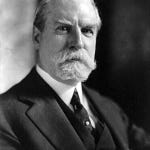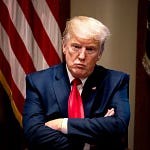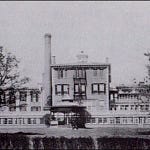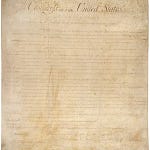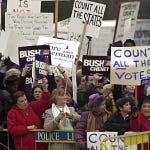This Day in Legal History: Judiciary Act of 1789
On September 24, 1789, Congress passed the Judiciary Act of 1789, formally titled An Act to Establish the Judicial Courts of the United States. This foundational statute created the structure of the federal judiciary as we know it today, establishing a three-tiered court system consisting of district courts, circuit courts, and the Supreme Court. At the top sat a six-member Supreme Court, with one Chief Justice and five Associate Justices. The Act also created 13 district courts and three circuit courts, aligning largely with state boundaries, and assigned federal judges to serve on both district and circuit courts—a practice known as “circuit riding.”
The Act gave federal courts jurisdiction over a wide range of cases, including those involving federal law, disputes between states, and cases between citizens of different states. It also authorized the Supreme Court to review decisions from state courts when federal law was at issue, a power that would later be affirmed in Martin v. Hunter’s Lessee (1816). The Act created the office of the Attorney General, tasked with representing the United States in legal matters, and laid the groundwork for the U.S. Marshals Service.
One of the most controversial provisions was Section 25, which allowed the Supreme Court to overturn state court decisions that conflicted with federal law or the U.S. Constitution—an early assertion of federal supremacy. The Act was largely the product of compromise, balancing the concerns of Federalists, who favored a strong national judiciary, and Anti-Federalists, who feared centralized power.
The Judiciary Act of 1789 was signed into law by President George Washington on the same day he nominated the first justices to the Supreme Court. Chief among them was John Jay, who became the nation’s first Chief Justice. The Act did not resolve all questions about federal judicial power, but it laid a durable foundation that, with amendments, remains in place more than two centuries later.
The Justice Department’s “weaponization” working group, led by controversial interim U.S. Attorney Ed Martin, has launched an inquiry into alleged improper practices at the U.S. Patent and Trademark Office (PTO). In a June letter to then-Acting PTO Director Coke Morgan Stewart, Martin accused the agency of covertly targeting certain patent applications—especially those in the electrical and artificial intelligence fields—for secret scrutiny and delay. He alleged the existence of a Biden-era revival of the discontinued Sensitive Application Warning System (SAWS), a program once used to quietly flag questionable applications without applicant knowledge. To be clear, these “questionable applications” were for things like free energy systems and so-called “miracle cures.”
Martin, who framed his inquiry as part of enforcing President Trump's executive orders on transparency, claimed Stewart had uncovered and ended the secretive policy. The letter demanded records related to the review of AI-related patents and other complex applications. The investigation was triggered by a PTO presentation highlighting a study on “patent thickets,” or overlapping patent claims in large families, which revealed examiner challenges in identifying double patenting issues in up to 22% of cases.
Critics argue that such behind-the-scenes programs lack transparency and due process for inventors. Veteran patent attorney Tom Franklin warned that any flagging system that denies applicants notice and opportunity to respond undermines legal fairness. However, some public interest advocates, like Alex Moss, defended the PTO's efforts to improve patent quality, dismissing claims of illegality as political posturing.
Martin’s involvement has drawn scrutiny given his record of dismissing January 6 prosecutions, purging prosecutors, and publicly airing inflammatory and racist remarks, including blaming “crazy Black ladies” for his firing from CNN. Now awaiting Senate confirmation for the U.S. Attorney role in D.C., Martin’s actions at DOJ—and this patent investigation—are fueling growing opposition in Congress.
DOJ ‘Weaponization’ Leader Sought Info on Patent Office Program
A federal judge has extended an injunction blocking the Trump administration from imposing political and ideological conditions on federal grant funding. The order, issued by Judge Richard Seeborg of the U.S. District Court for the Northern District of California, follows a previous temporary restraining order granted in August. The court found that cities and counties led by Fresno, California, are likely to succeed in their lawsuit, which argues the administration exceeded its legal authority and violated constitutional protections.
The plaintiffs challenge a series of Trump executive orders, including one from August 7, which restricted federal funding from being used to support policies involving racial equity, environmental justice, transgender rights, immigration protections, and what it called “anti-American values.” Local governments say they were told to strip grant applications of any mention of “equity” or related concepts, or risk losing funding. Fresno reported receiving a letter from HUD on August 18, questioning its compliance with these mandates.
Judge Seeborg agreed the orders may violate multiple legal provisions, including the Spending Clause, the Fifth and Tenth Amendments, and the Administrative Procedure Act. The court found that the conditions were likely arbitrary, beyond the scope of the administration’s statutory authority, and unconstitutional. The administration had asked that any injunction be narrowly tailored, but Seeborg extended the broader block on enforcing these grant conditions.
Trump Further Blocked From Imposing Federal Grant Conditions
U.S. law schools are reporting record-breaking first-year enrollment in 2025, driven by an 18% surge in applicants—a sharp jump following an already strong admissions cycle in 2024. Elon University School of Law is among seven schools announcing their largest-ever incoming classes, while at least ten others, including Harvard, reported their biggest first-year cohorts in over a decade. Harvard Law School enrolled 579 students this fall, up 3% from its norm and the largest class since at least 2011.
The full scope of national enrollment won't be known until the American Bar Association releases official numbers in December, but early reports suggest crowded campuses and logistical challenges like classroom capacity and student support services. The University of Hawaii, Liberty University, Rutgers, Pace, and several regional law schools also saw record or near-record first-year intake.
While law school deans are celebrating the growth, some industry experts are cautious. Nikia Gray of the National Association for Law Placement warned that an influx of graduates in 2028 could saturate the job market, especially as law firms scale back entry-level hiring due to AI advancements. Still, others see opportunity—Southern Illinois Law Dean Hannah Brenner Johnson noted rising student numbers may help address access-to-justice issues in underserved regions, or “legal deserts.”
The last major spike in law school enrollment came in 2021 amid COVID-19, but that cohort graduated into a strong job market. Whether the class of 2028 will enjoy similar employment success is uncertain, as economic conditions and tech disruption may shift in the coming years.
Applicant boom drives record first-year law school classes | Reuters








